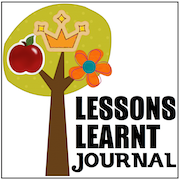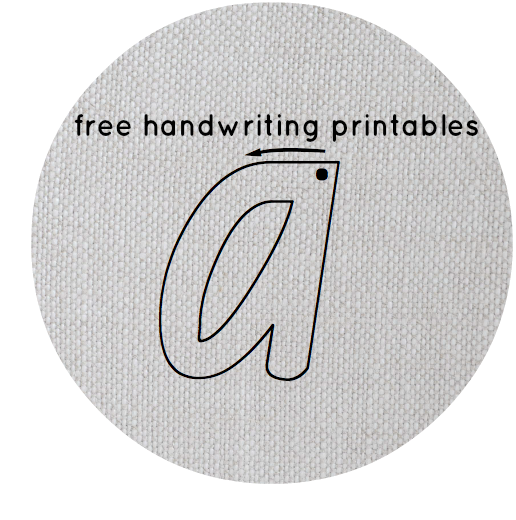How important is good handwriting? In this digital age, it is tempting to sweep handwriting skills under the rug. To an extent, I’m in the “don’t fuss too much about good handwriting” party. I think if too much emphasis is placed on it, the author (regardless of whether they are an adult or a child) is forced to restrict the amount of attention they can give to the monumental higher-order thinking task of actually composing their written work.
The process of handwriting has to be almost effortless for the writer or the writing task will be too arduous. However, the written work still has to be legible, or no matter how brilliant the written work, the reader will not be able to comprehend and appreciate it. (Apparently Beethoven’s original musical manuscripts were incredibly messy, dots and scribble all over the place- but thank goodness it was still legible.)
My definition of good handwriting is not beautiful calligraphy. Beautiful calligraphy is beautiful calligraphy. Using ideas about handwriting, kinesthetic awareness and kinesthetic memory from Meeks, L & Easson, V (1997, p.iii) I think of good handwriting as one that is legible and fluid, “…where the physical process is so automatic to the writer that very little attention needs to be paid to the finer details of letter formation and spacing”.
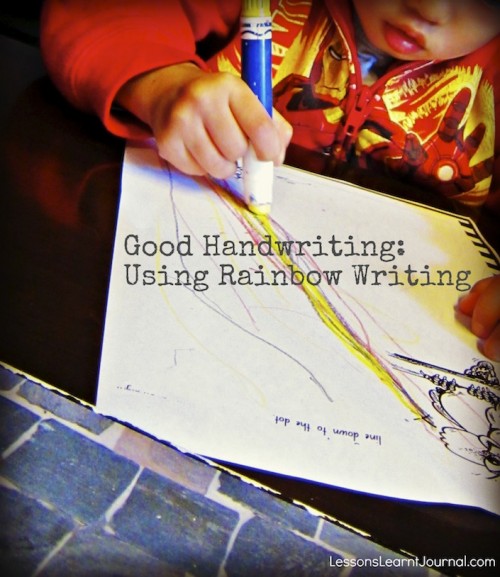
I grew up with handwriting programs filled with dot-to-dot tracing techniques. Dot-to-dot tracing is still used in much of the digital media available today, (whether they be itouch/iphone/ipad apps or toys that teach kids how to write). The problem with dot-to-dot tracing is that it does not encourage the learner to see the writing of each letter as one complete movement. This limits kinesthetic awareness and memory over time. Good kinesthetic awareness and memory is needed for good handwriting. “Good kinesthetic awareness and memory allow a child to make smooth and automatic gross and fine motor movements in a defined space”, Meeks, L & Easson, V (1997, p.iii).
In providing N & M with pre-writing activities, I was keen to introduce them to rainbow writing. Rainbow writing is basically where children practise whole movements of letter writing many times over. Depending on the medium used, they may repeat the movements using different colours or just simply repeat the movements over and over again (e.g. in a tray filled with sand or salt or over sandpaper letters).
In our first week of rainbow writing, N & M focused on straight lines. Using activities by Meeks, L & Easson, V (1997) the pre-writing exercise encouraged them to look where they were going. Their aim was to draw a straight line from the bird to the worm (or cat to the mouse), paying particular attention to:
- Not lift their crayon/texta/pencil;
- Go quickly
- Start right on the cross (next to the bird)
- Stop right on the dot (next to the worm)
As this was their first rainbow writing experience, I focused on their movement. Was it continuous and smooth?
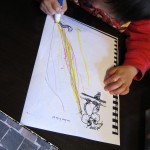
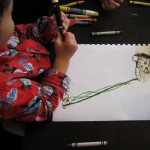

Window crayons were their preferred writing implement. It’s oil-pastel like texture helped them easily glide across the paper and the bold colours were irresistible. It does tend to get easily onto their hands, (possibly because they coloured in their own hands as part of the experience), but thankfully it’s easily washable.
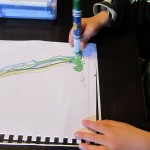
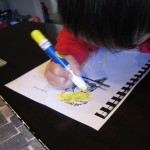
In true N&M tradition, an experience is incomplete without some sort of game involved. They soon turned their attention away from straight lines to ‘hiding’ the bird and worm under a mass of crayon.
Reference List:
Meeks, L & Easson, V 1997, ‘Rainbow writing Book 1: Pre-writing and Lower Case Letters’, Ants in the Apple, Exeter, New South Wales.
N & M: 3 years, 3 months
August 2011

